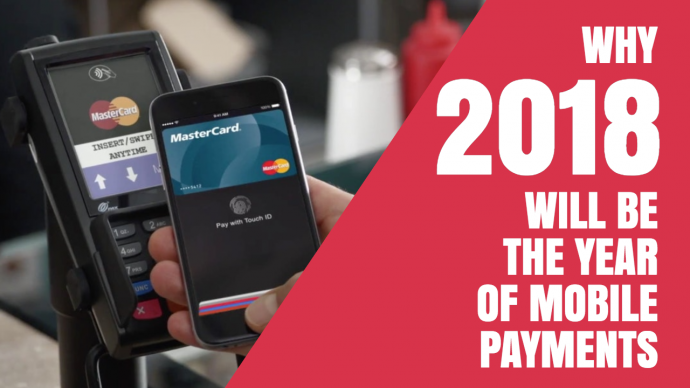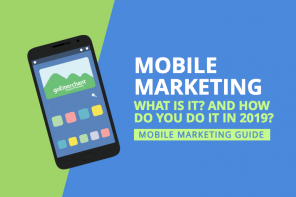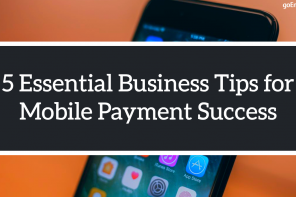This isn’t the first year that payments pundits have declared it to be the “year of mobile payments.” Like Apple, Samsung and Google have collectively learned, getting consumers and merchants to buy into mobile payments hasn’t always been easy.
For years, tech and payment companies have struggled to define what precisely mobile payments are. Were the payments made using a mobile device as the payment mechanism, or were the payments made from a mobile device? The difference fragmented the industry. By 2018, the debate has been solved: It doesn’t matter how mobile payments are defined as much as it matters that mobile payments, as a whole, will determine the future of retail.
The start of 2018 begins to tell a new story. Apple has all but given up on promoting Apple Pay as it goes all in on its P2P Apple Cash app. Zelle has united banking networks and made it possible for consumers and businesses with different banks to pay each other. PayPal continues to gain ground with merchants and consumers and remains a staple at checkout. Google has finally figured out its mobile wallet plans and merged Google Wallet with Android Pay to create Google Pay. It took years and many failed innovations to get here, but the time is finally right for the mass adoption of mobile payments.
How This Sets The Stage For 2018’s Mobile Payments Future
Leading up to 2018, the debate was centered on which mobile payments player would win out — and which solution would fizzle. As merchants have seen, not every mobile innovation has stuck. The reality is that there is still plenty of room for a multitude of mobile payments services. It’s up to merchants to equip themselves with the right software and hardware that allows them to accept their customers preferred payment methods. However, payment ubiquity, solution convergence and the ability to process payments on any device will ultimately become essential. The evolution of the POS over the last few years shows why now is the time.
Goodbye Legacy Systems, Hello Mobile-Point-Of-Sale
Perhaps consumers aren’t rushing to pay at the physical POS with mobile payment apps, but mobile has finally ignited in a way that’s changing how merchants think about their checkout solutions. Customers expect more from their merchants, and today’s mobile payments solutions have paved the way for the future of how consumers interact with business.
This is where mPOS systems come into the mix. Not only are legacy systems sometimes clunky to use and hard to upgrade, they are out-of-date with what the market demands. More than ever, customers expect solutions to be flexible, mobile and reduce friction points at checkout. The rise in popularity and ease of use of mPOS systems has paved the way for mobile payments apps to gain traction in the merchant ecosystem.
More Speed, Security, and Scalability
The growing number of data breaches in 2017 is reason enough to show why consumers and merchants should embrace mobile payments systems. With end-to-end encryption, secure user authorizations, faster mobile credit card processing, and more, the right mPOS solution equips businesses with best security credentials.
With the necessary speed and security to handle the evolving threats across both e-commerce marketplaces and physical POS systems, having the ability to process fully encrypt payment data faster than ever before is what’s driving this year’s mobile payment trend. By the end of 2018, merchants will have learned that they must provide solutions that enable their business to scale well into the future.
A Ripe Audience and a Rapid Rate of Adoption
The mobile payments industry has grown slower than expected over the last few years simply because initially they weren’t widely adopted among consumers. Companies like Google were perhaps too early to the scene. As a result, merchants were slow to shift as well. The tables have turned, and mPOS devices have become the norm.
In 2017, Amazon’s patent over its one-click checkout button expired. This paves the way for even more innovation in the e-commerce checkout space — which is ripe for mobile payments solutions to capitalize on. A study from the National Federation of Independent Business suggests that by 2020, 56% of consumers will be using mobile payments. That same research indicates that in a five-year-span, between 2015 and 2020, mobile payments volume will grow by 80%.
The right mix of technology, security, and API integration methods have finally created an easier path for merchants looking to stay ahead of mobile payments innovation curve. As these technologies become widespread, mobile will continue changing how companies conduct businesses with their customers. In 2018, mobile will shape the retail industry and e-commerce marketplaces faster than ever — with integrated payments solutions paving the way for merchants to leap into the future. Security, speed, and flexibility are consumer desires that will continue to grow, and mobile payments are the answer.




